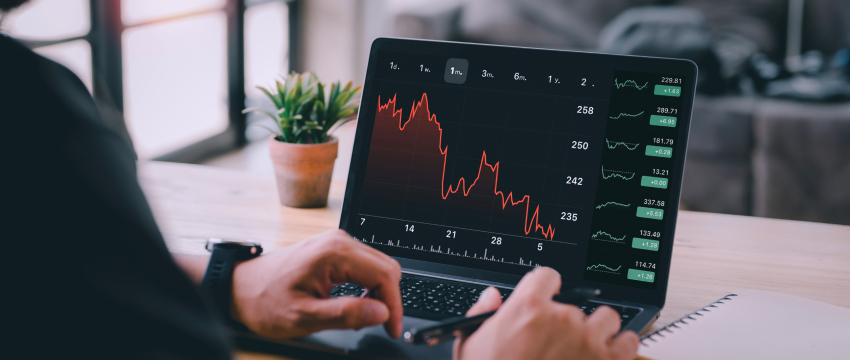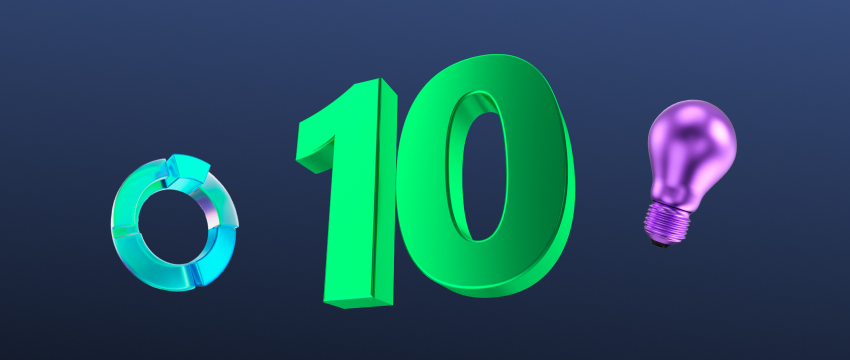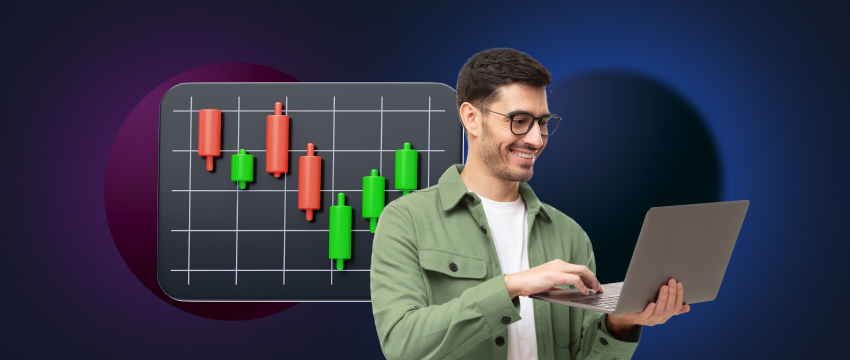Forex traders participate in the global currency market by buying one currency and selling another to make profits. The forex market is the largest financial market in the world, which operates 24 hours a day, 5 days a week. In 2022, the global daily trading volume reached 7.5 trillion.
Forex trading can be both exciting and challenging. Many traders start off very hopeful but then realise that they can’t become successful overnight. However, with the right mindset and strategies, anyone can improve their trading skills.
In this article, we’ll share 10 top tips to build a strong foundation for improvement in the forex market.
1. Forex traders should set clear trading goals
Having goals is important in forex trading. It’s easy to lose track and make impulsive decisions when there are no clear objectives. traders know what they want and how to achieve it. The key is to create realistic, short-term goals to motivate yourself as you work towards your long-term goals.
As a first step, identify short-term and long-term goals. Short term goals may involve improving your risk to reward ratio or developing your chart analysis skills. While long-term goals include creating a steady, profitable trading account, or consistently reaching a specific percentage of winning trades.
2. Choose the right forex broker
Choosing a reliable is broker is one of the most important decisions you need to make as a trader. A few key factors to consider when selecting a forex broker are regulation, low spreads, reliable customer support, and quick withdrawal processes.
Read reviews from other traders before you sign up with a broker. Some brokers may offer bonuses, or low commissions, but don’t allow these to influence you. For example, a CFD broker with low spreads but poor customer service may not be the right choice for a beginner. On the other hand, a broker that provides a user-friendly platform, an extensive range of educational resources, and exceptional customer service may be more suitable.
3. Pick the best trading platform
Your trading experience might be positively or negatively impacted by the trading platform you use. The characteristics of various platforms vary, and some may suit your investment style better than others. For example, Meta Trader 4 (MT4) is the best option if you intend to trade with automated strategies or EAs (expert advisors) as the platform supports these tools.
Before choosing a platform, use a demo account to test it out. You can try out the platform’s capabilities using a demo account without risking real money.
4. Choosing a trading strategy for new forex traders
Every forex trader is different and something that works for one trader may not work for another. For this reason, creating a customised investing plan is essential. A good strategy should be based on your trading style, available time, and risk tolerance,
For instance, if you have limited time you may want to use a longer-term trading technique, such as position trading. This kind of trading focuses on longer-term trends rather than short-term swings and involves holding positions for weeks or even months.
However, if you have more time to commit to your transactions, you may prefer to use scalping or 日内交易. These strategies can be highly profitable if risk is managed properly, but they need continuous monitoring and quick decision making.
It is important to be consistent, regardless of the trading style you choose. Create a plan, follow it, and don’t allow feelings or market hype to influence your decisions.

5. Determine entry and exit points
Identifying the right entry and exit points is important for trading. However, many traders, especially beginners, can get confused by conflicting signals that appear when analysing charts across different time frames. For instance, a weekly chart may suggest a buying opportunity, while an intraday chart shows a sell signal.
To avoid confusion, make sure the two time frames are aligned. So, if the weekly chart is indicating a buy signal, wait until the daily chart also confirms a buy signal.
6. Use stop loss orders to protect forex traders from major losses
Stop loss orders are essential tools for managing risk in forex trading. They automatically close the position at a predetermined exchange rate. Always set a stop loss, regardless of the trading strategy you use.
You can also use a stop-loss in combination with a take profit to define your maximum loss and desired profit. These tools ensure your trade will close at the specified price, even if you aren’t keeping an eye on your trading platform.
Stop-loss orders play a key role in protecting your capital and avoiding significant losses.
7. Keep a trading journal
Keeping a trading journal is a great way to track your progress and learn from your mistakes. You can record every transaction you make in a trading journal, including the entry and exit points, the reason for the trade, the result and your emotions during the trade.
By reviewing your journal regularly, you can identify patterns in your trading behaviour and make the necessary adjustments.
For example, you might notice that you often exit trades too early when the market is moving in your favour. This can signal a lack of patience or an over-reliance on short-term market movements. On the other hand, your journal may show that you often enter trades without a clear plan, which leads to unfavourable outcomes.
By keeping a track of your transactions, you will learn a lot about what works and what doesn’t, which will help you improve as a trader.
8. Join trading communities
Joining a forex trading community can help you advance as a trader. Forums, social media groups and online communities offer a wealth of knowledge, ranging from beginner tips to advanced strategies shared by experienced traders.
You can ask questions, gain new insights, and keep up with market trends by interacting with other traders.
9. Test strategies on a demo account for forex traders
Starting with a demo account is a good idea if you’re new to forex trading or testing a new strategy.
By investing with virtual money through a demo account, you may test different strategies and gain insight into how the market works without risking real capital.
It’s the best way to practise your skills, learn from errors and boost your confidence before trading on a live account.
10. Take breaks to avoid emotional trading
Lastly, don’t undervalue the significance of taking breaks. Forex trading can be mentally exhausting, particularly when volatility is high.
If you are feeling stressed or emotional, it’s a good idea to move away from the screen and have a break. Impulsive decisions. Emotional trading often leads to making impulsive decisions, which can result in large losses.
For instance, after a losing trade, it’s important to step back and give yourself some time to clear your mind. Emotional decisions can cloud your judgement and lead to impulsive decisions.
Remember, the forex market will still be there when you’re ready to go back, allowing you to approach your transactions with a clearer mindset.

Conclusion
It takes discipline, patience and the right strategies to become a forex trader. Start by setting clear goals, choosing a reliable broker, and developing a solid trading strategy. Equally important is effective risk management to protect your capital.
You can improve your skills further by practising on a demo account, keeping a trading journal, and joining trading communities.
Above all, keep in mind that trading is a continuous journey of growth and learning.
Stay disciplined, follow your trading plan, and never stop learning. By following these 10 tips, you can build a strong foundation for becoming a forex trader.
免责声明: This material is for general informational and educational purposes only and should not be considered investment advice or an investment recommendation. T4Trade is not responsible for any data provided by third parties referenced or hyperlinked in this communication.




